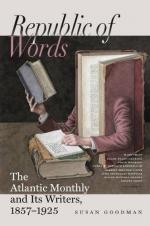In America, where guns made entirely of cast-iron, and undoubtedly the best in the world for horizontal shell-firing, are persisted in, though hardly adequate to the heavy charges demanded by iron-clad warfare, the necessity of decreasing the strain on the gun without greatly reducing the velocity of the shot has become imperative. It would be impossible even to recapitulate the conflicting arguments of the experts on this subject, within the limits of this paper. It does appear from recent experiments, however, that this result can be accomplished by compressing the powder, so that, we will suppose, it burns slowly and overcomes the inertia of the shot before the whole mass is ignited; and also by leaving an airspace around the cartridge, into which the gases probably expand while the inertia of the shot is being overcome, thus avoiding the excessive blow upon the walls of the gun during the first instant of the explosion. Whatever the cause may be, the result is of the highest importance, not only as to cast-iron guns, but as to all ordnance, and warrants the most earnest and thorough investigation. The principles of the Armstrong gun differ in some degree from all those mentioned, and will be better referred to under the head of Heavy Ordnance Described. The Armstrong gun is thus fabricated. A long bar of iron, say 3 by 4 inches in section, is wound into a close coil about 2 feet long and of the required diameter,—say 18 inches. This is set upon end at a welding heat under a steam-hammer and “upset” into a tube which is then recessed in a lathe on the ends so as to fit into other tubes. Two tubes set end to end are heated to welding, squeezed together by a heavy screw passing through them, and then hammered lightly on the outside without a mandrel. Other short tubes are similarly added. Five tubes of different lengths and diameters are turned and bored and shrunk over one another, without successively increasing tension, however, to form a gun. The breech-end of the second tube from the bore is forged solid so that its grain will run parallel with the bore and give the gun longitudinal strength. Both the wedge and the screw breech-loading apparatus are employed on guns of 7 inches bore (110-pounders) and under. It will thus be seen that the defects of large solid forgings are avoided; that the iron may be well worked before it is formed into a gun; and that its greatest strength is in the direction of the greatest strain; and on the other hand, that the gun is weak longitudinally and excessively costly, (the 7-inch gun costs $4,000, and tin 10-1/2-inch, $9,000,) and that the material, although strong and pretty trustworthy in the shape of bars, has insufficient elasticity and hardness. Still, it is a formidable gun, especially when relieved of the weak and complex breech-loading apparatus, and used with a better system of rifling and projectiles than Armstrong’s. The 110-pounder Armstrong rifle has 99-1/2 inches length and 7 inches diameter of bore, 27 inches maximum




